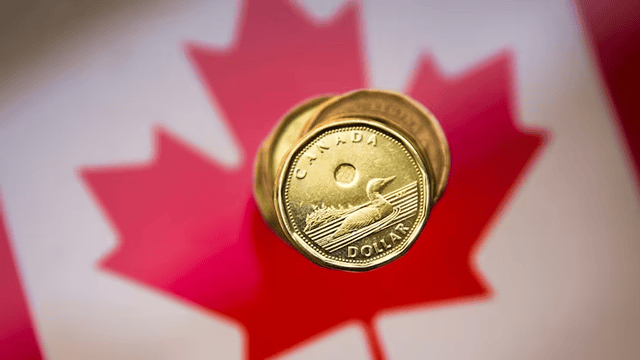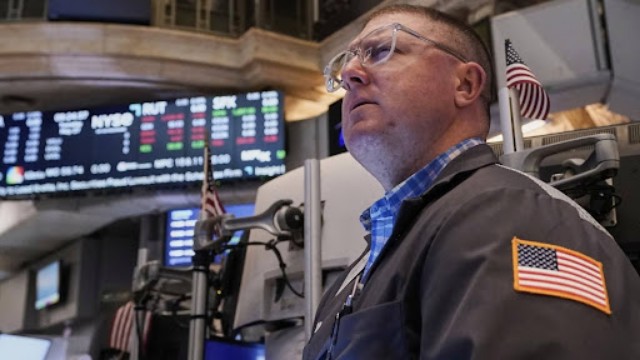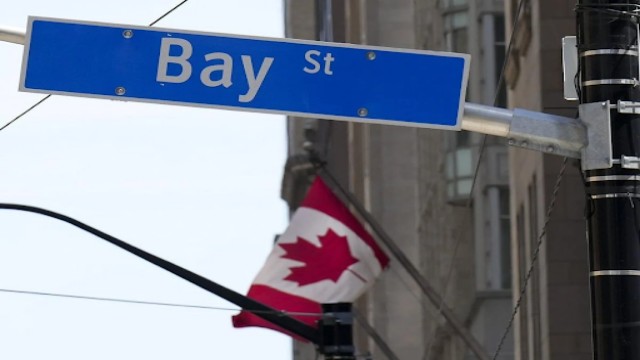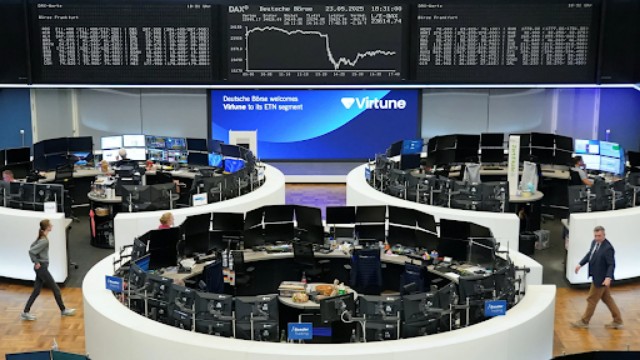
Skyscrapers housing major banks are seen in Toronto's financial district on Friday, September 8, 2023. (Photo by Andrew Lahodynskyj / The Canadian Press)
Canada’s main stock index slipped on Thursday, while U.S. markets ended the day higher, following a wave of investor reaction to recent American court rulings surrounding tariffs introduced during Donald Trump’s presidency.
The mixed outcome came after a series of decisions in the U.S. courts that first blocked and then briefly revived many of the tariffs previously set by Trump. This back-and-forth left investors weighing possible impacts on trade and future business costs.
In Toronto, the S&P/TSX composite index ended the day with a loss of 72.89 points, closing at 26,210.56. The decline was largely driven by uncertainty around trade and commodity prices.
South of the border, investors appeared more optimistic. The Dow Jones Industrial Average climbed 117.03 points to reach 42,215.73. The S&P 500 also gained 23.62 points, landing at 5,912.17. Meanwhile, the Nasdaq composite saw an increase of 74.93 points, closing at 19,175.87.
The difference in market movement between the U.S. and Canada is partly due to investor expectations. American markets appeared to view the court rulings as potentially easing future restrictions and encouraging smoother trade, while Canadian investors worried about potential ripple effects on the country’s trade-dependent economy.
On the currency front, the Canadian dollar saw a slight bump, trading at 72.43 cents US compared to 72.33 cents US the day before.
Oil prices also slipped, with the July crude contract falling 90 cents to settle at US$60.94 per barrel. Natural gas prices dipped too, with the July contract down 3.5 cents to US$3.52 per mmBTU.
Gold prices moved in the opposite direction, gaining strength as investors looked for safer assets. The August contract for gold rose by US$21.50, closing at US$3,343.90 an ounce. Copper, on the other hand, ended nearly flat, dipping just one-tenth of a cent to US$4.68 per pound.
The tug-of-war over Trump’s tariffs has added another layer of volatility to already nervous markets. Investors are now watching closely to see how long the reinstated tariffs might last — and whether further legal challenges could change the landscape again.
As the dust settles, analysts say it’s still unclear how this will impact longer-term market trends. For now, the U.S. market has welcomed the move, hoping for reduced barriers. But in Canada, worries over trade and commodity reliance are keeping investors cautious.















